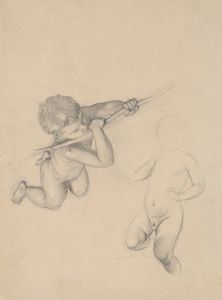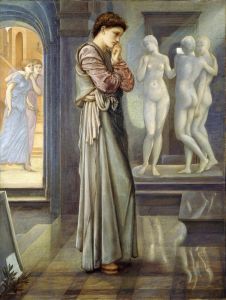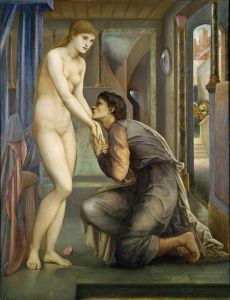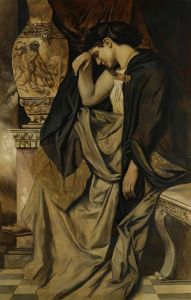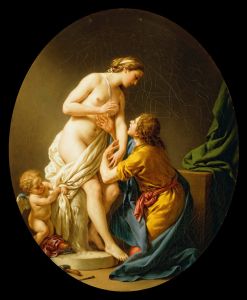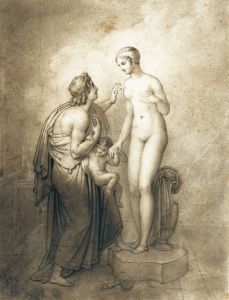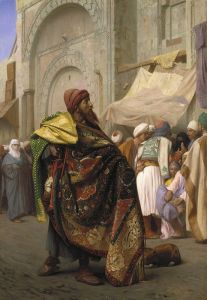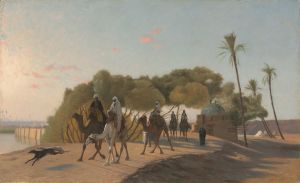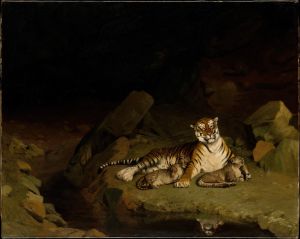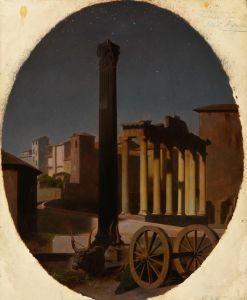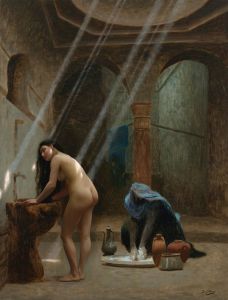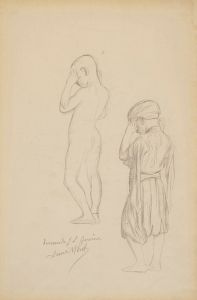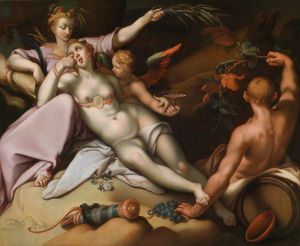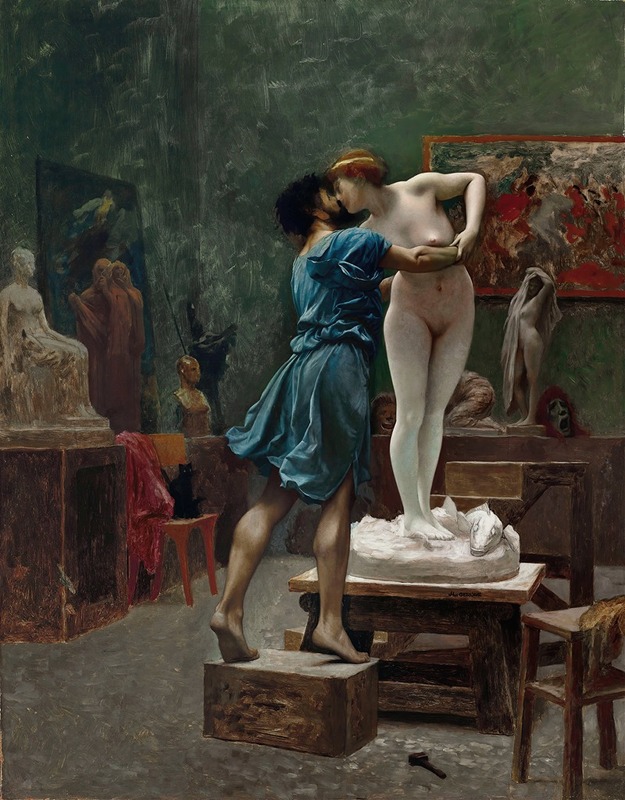
Pygmalion et Galatée, esquisse à l’huile
A hand-painted replica of Jean-Léon Gérôme’s masterpiece Pygmalion et Galatée, esquisse à l’huile, meticulously crafted by professional artists to capture the true essence of the original. Each piece is created with museum-quality canvas and rare mineral pigments, carefully painted by experienced artists with delicate brushstrokes and rich, layered colors to perfectly recreate the texture of the original artwork. Unlike machine-printed reproductions, this hand-painted version brings the painting to life, infused with the artist’s emotions and skill in every stroke. Whether for personal collection or home decoration, it instantly elevates the artistic atmosphere of any space.
Jean-Léon Gérôme's "Pygmalion et Galatée, esquisse à l’huile" is an oil sketch that exemplifies the artist's fascination with classical mythology and his meticulous attention to detail. Gérôme, a prominent 19th-century French painter and sculptor, was known for his academic style and his ability to bring historical and mythological subjects to life with vivid realism.
The painting "Pygmalion et Galatée" draws inspiration from the ancient myth of Pygmalion, a story that originates from Ovid's "Metamorphoses." In the myth, Pygmalion is a sculptor who becomes enamored with a statue he has carved, which he names Galatea. Disenchanted with the women around him, Pygmalion sculpts his ideal of womanhood and falls deeply in love with his creation. Moved by his devotion, the goddess Venus brings the statue to life, allowing Pygmalion to be united with Galatea.
Gérôme's interpretation of this myth captures the moment of transformation, a theme that resonates with the artist's interest in the interplay between art and reality. The painting depicts Pygmalion embracing Galatea as she comes to life, a scene that is both intimate and dynamic. Gérôme's skillful use of light and shadow enhances the drama of the moment, highlighting the contrast between the cold, inanimate marble and the warmth of living flesh.
The oil sketch is characterized by Gérôme's precise brushwork and his ability to convey texture and form. Although it is a preparatory work, the sketch reveals Gérôme's careful planning and his attention to composition and detail. The figures are rendered with anatomical accuracy, a testament to Gérôme's academic training and his dedication to realism.
Gérôme's "Pygmalion et Galatée" is part of a larger body of work that explores themes of transformation and the power of art. Throughout his career, Gérôme frequently revisited classical subjects, using them as a lens through which to examine contemporary issues and ideas. His works often reflect a fascination with the boundary between reality and illusion, a theme that is central to the Pygmalion myth.
The painting is also notable for its reflection of 19th-century attitudes towards art and beauty. During this period, there was a renewed interest in classical antiquity, and artists like Gérôme sought to capture the ideals of beauty and perfection embodied in ancient art. "Pygmalion et Galatée" can be seen as a meditation on the artist's role as a creator, capable of imbuing lifeless materials with vitality and emotion.
Jean-Léon Gérôme's contribution to the art world extends beyond his paintings; he was also a respected teacher at the École des Beaux-Arts in Paris, where he influenced a generation of artists. His works are celebrated for their technical excellence and their ability to engage viewers with timeless narratives.
"Pygmalion et Galatée, esquisse à l’huile" remains an important example of Gérôme's artistic legacy, illustrating his mastery of the academic style and his enduring interest in the myths that have shaped Western art and culture. The painting continues to be studied and admired for its artistic merit and its insightful portrayal of a classic tale.





